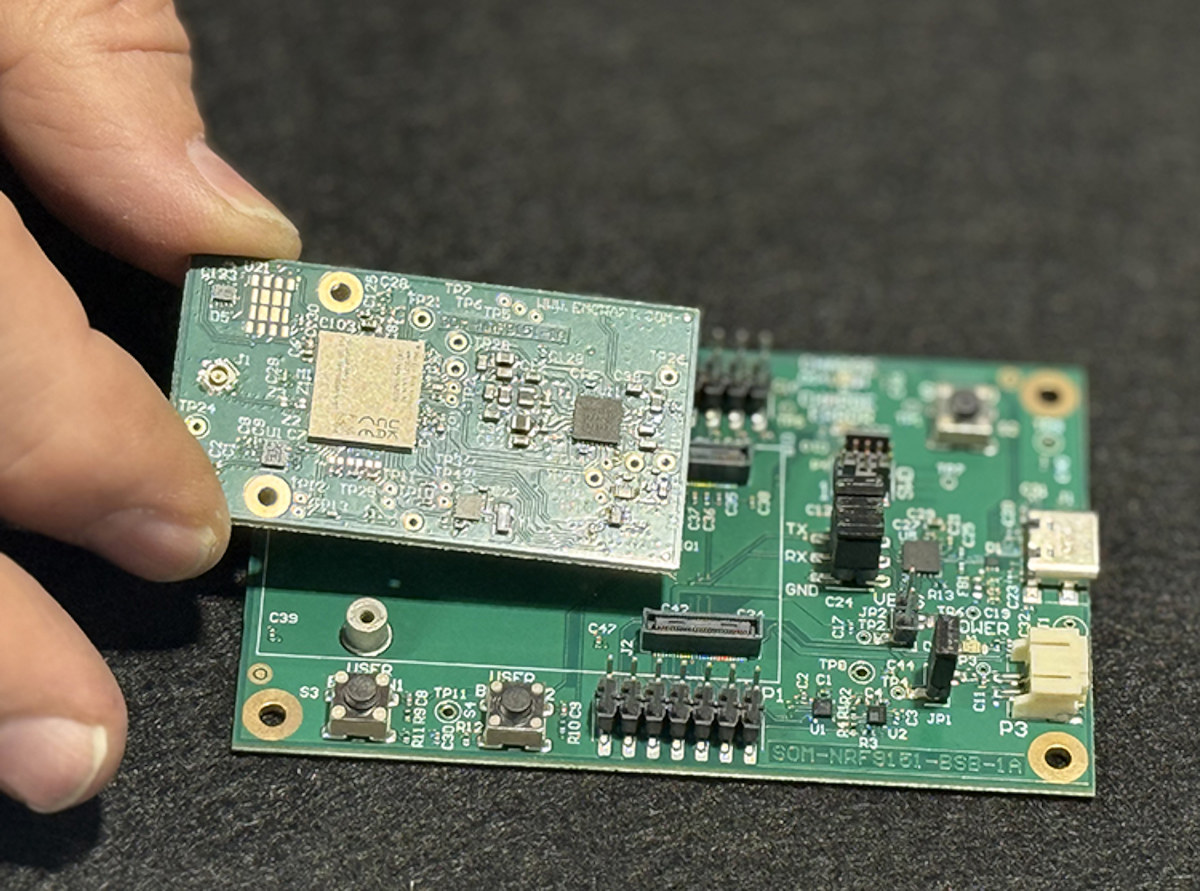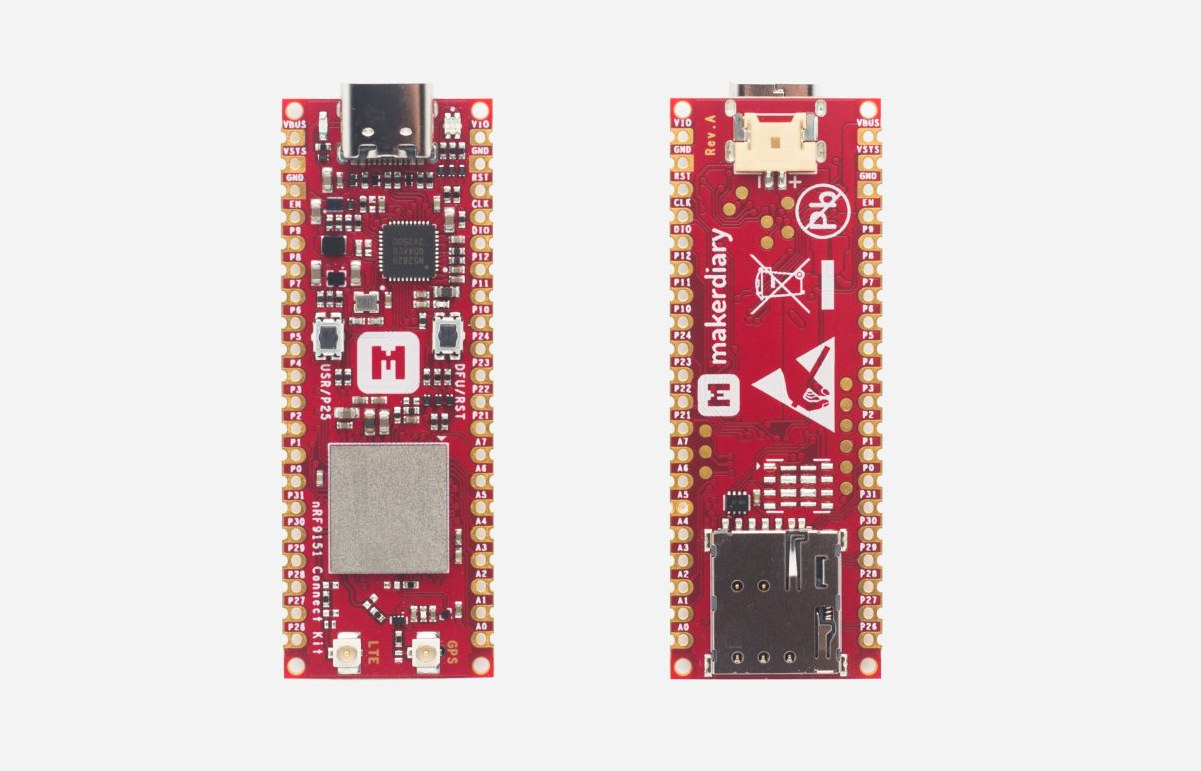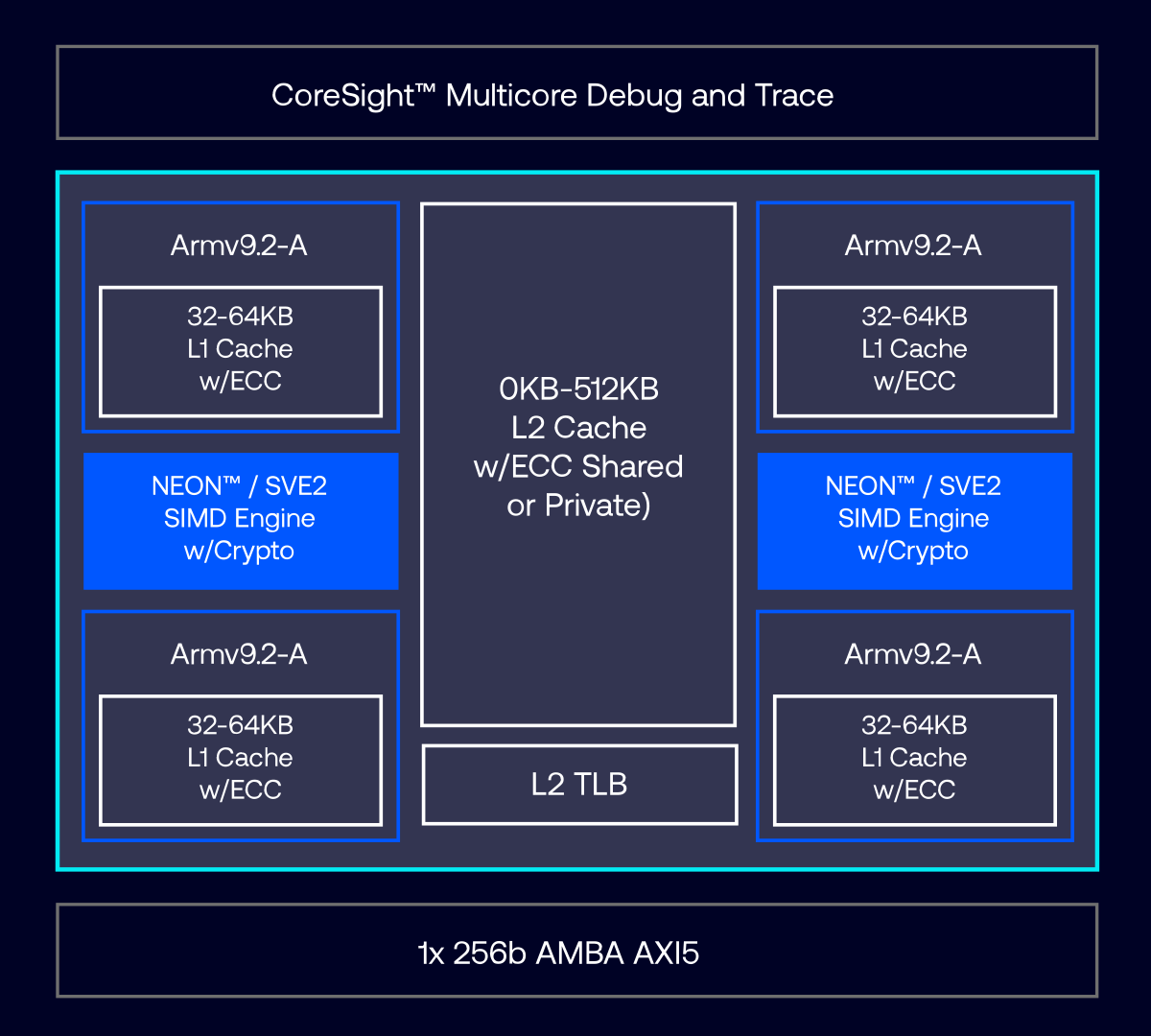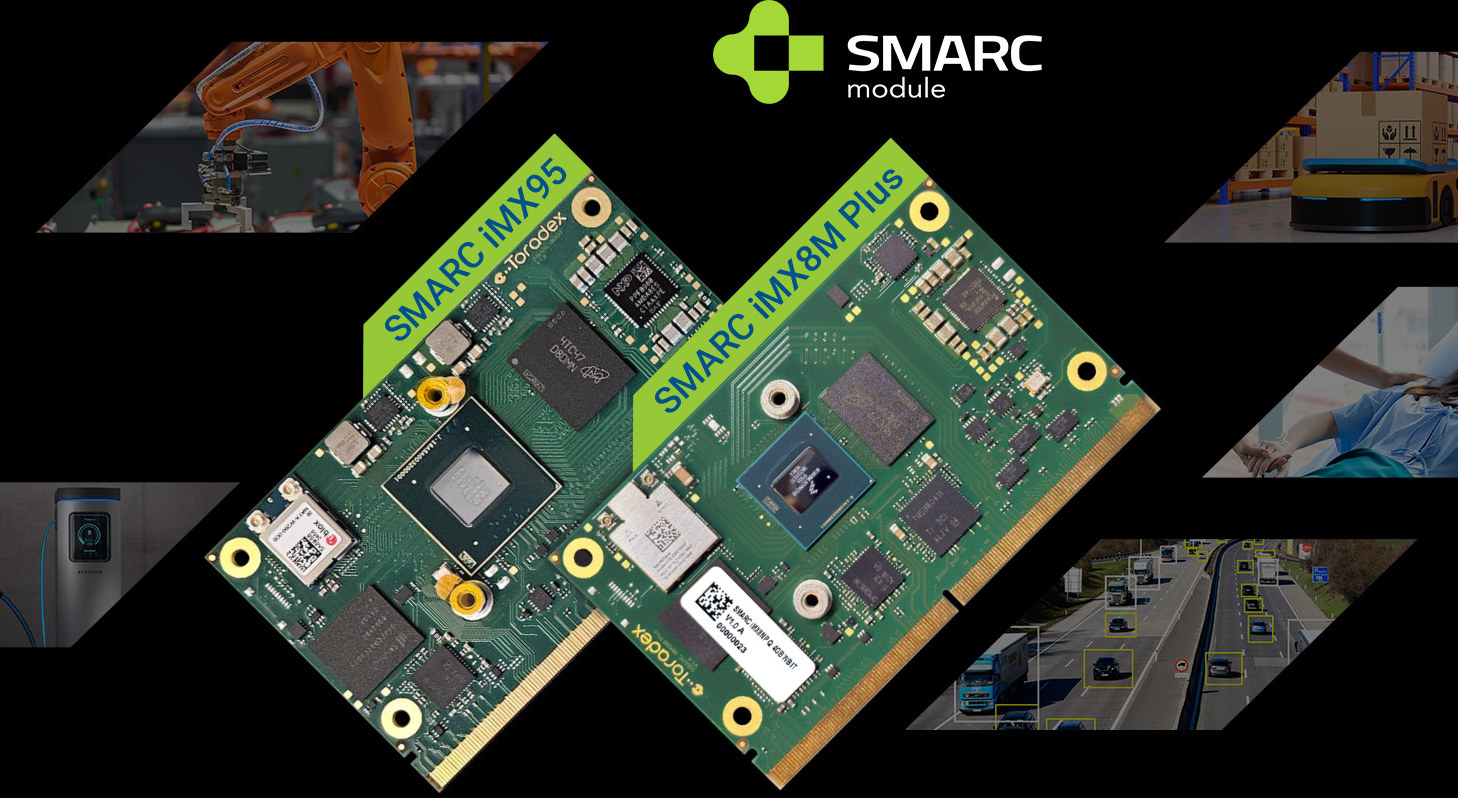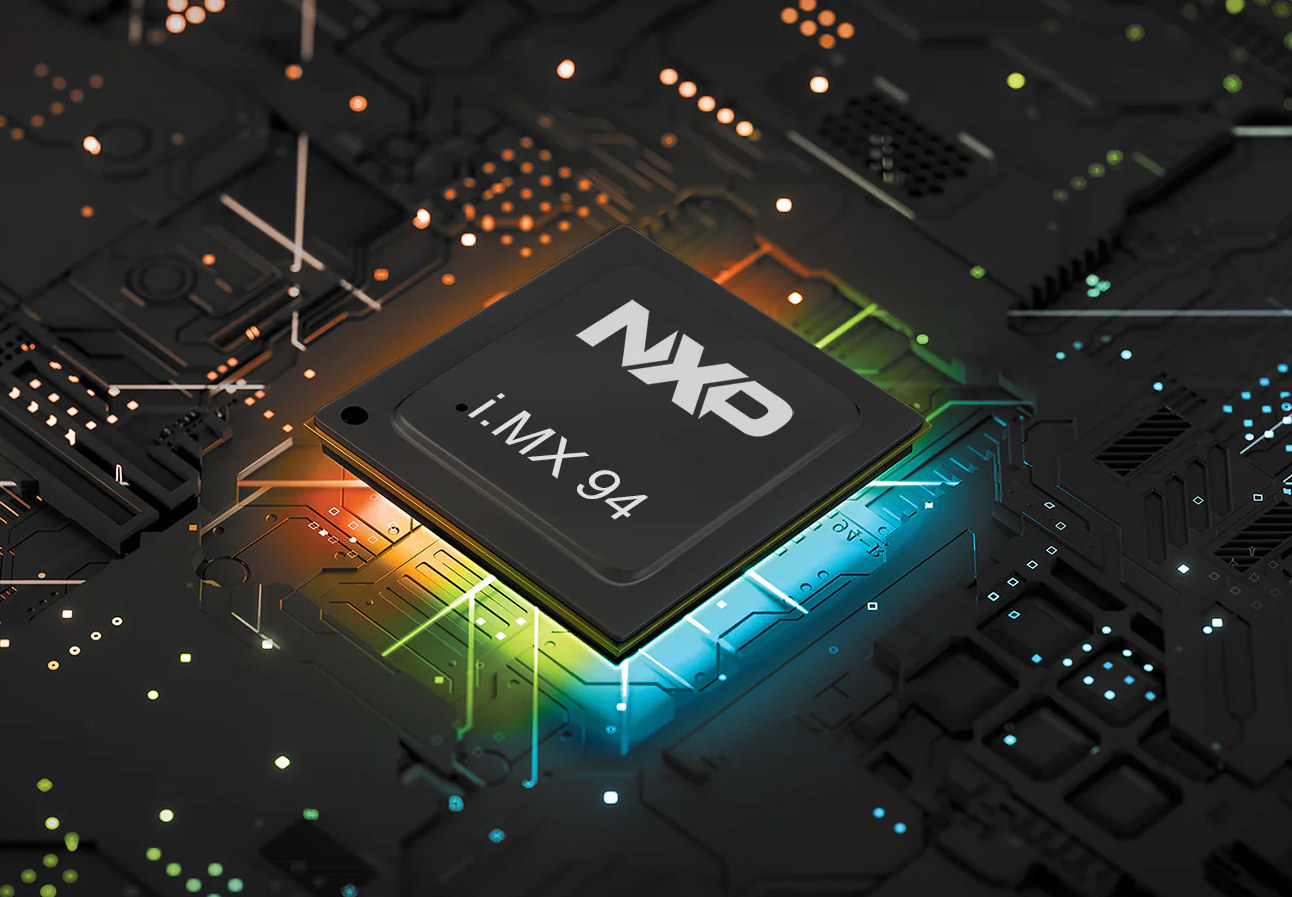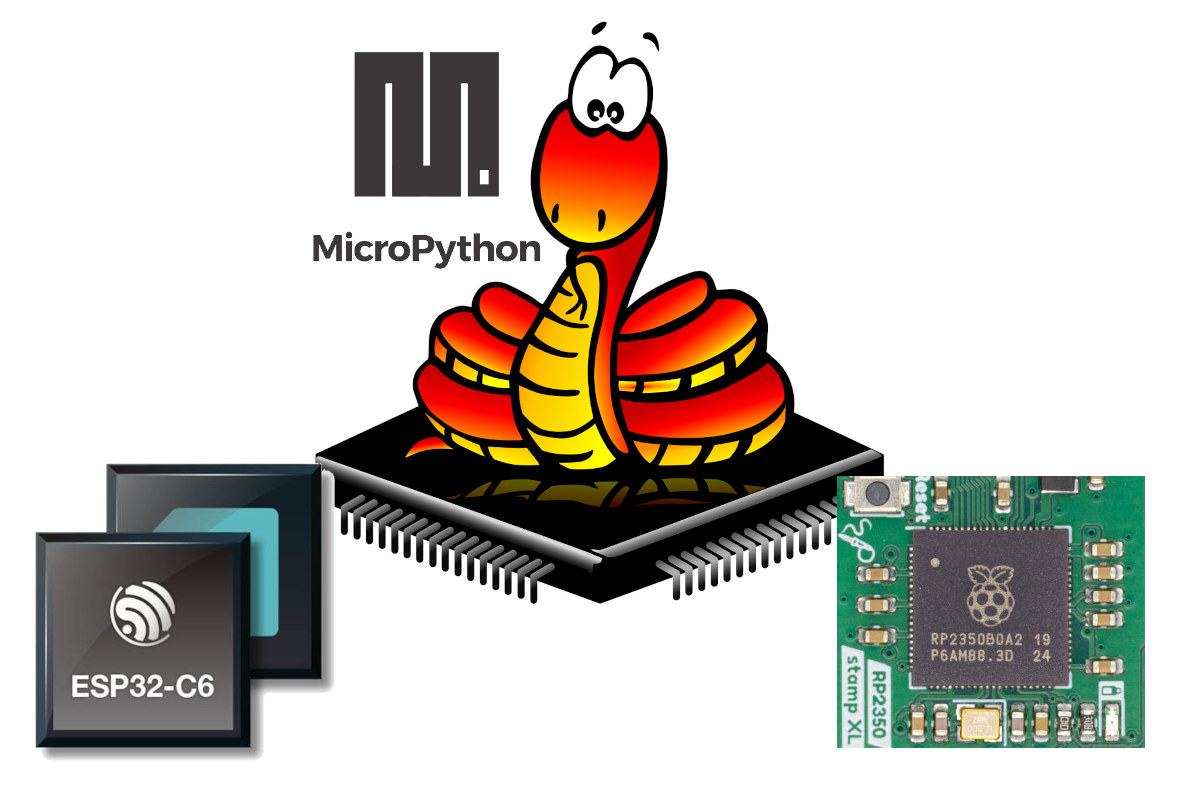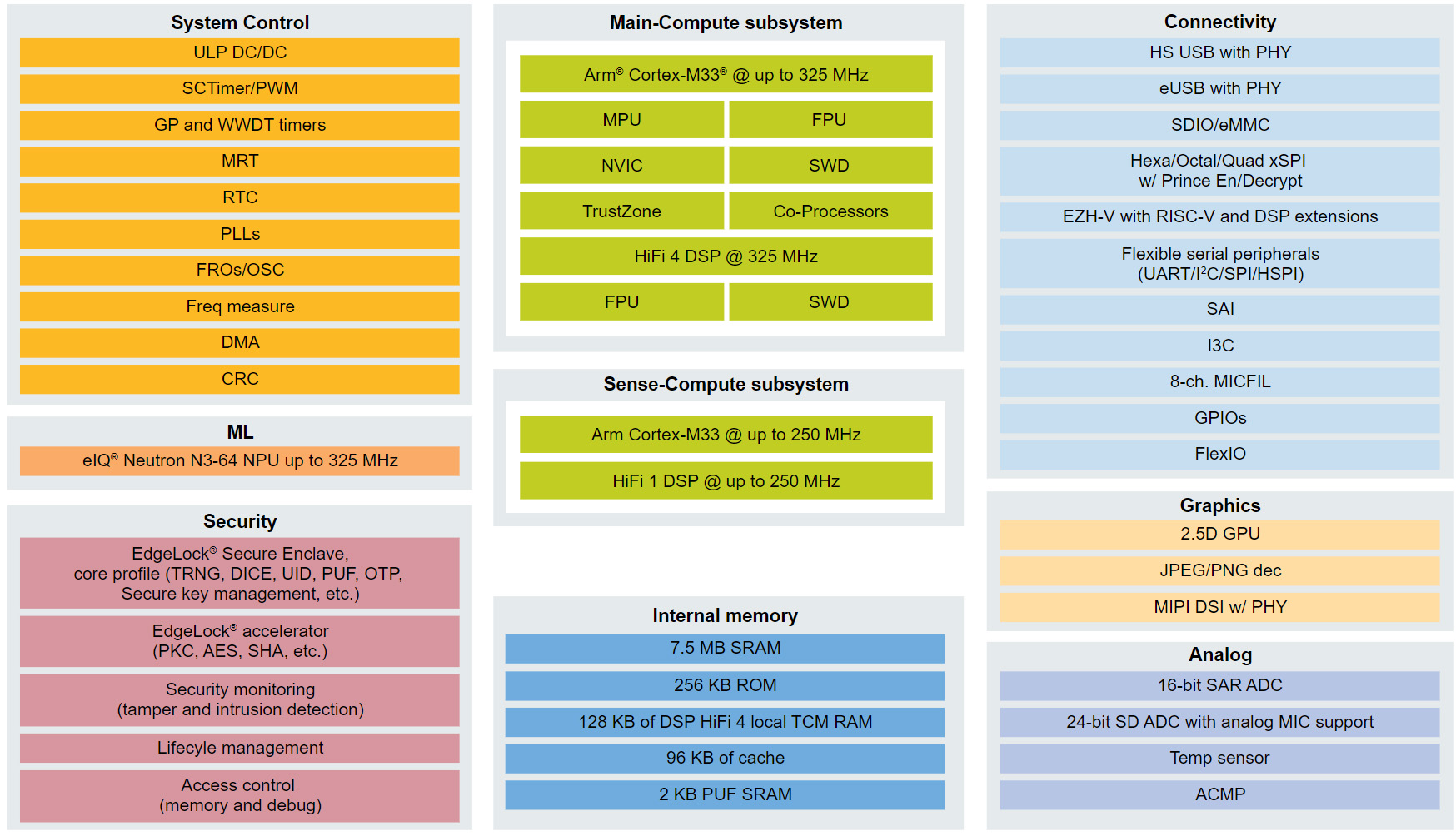Better known for its Linux and uCLinux-powered system-on-modules, emCraft has just launched the SOM-NRF9151 system-on-module powered by a Nordic Semi nRF9151 Arm Cortex-M33 SiP (System-in-Package) with LTE-M, NB-IoT, and DECT NR+ connectivity, and GNSS functionality. The SoM also features a 16MB SPI flash, an nPMIC1300 for power management, a Nano SIM card slot, and a footprint for an eSIM. I/Os and power signals are exposed through two 50-pin board-to-board connectors, and the company provides a starter kit with a baseboard for evaluation. emCraft SOM-NRF9151 specifications: SiP – Nordic Semi nRF9151 CPU – Arm Cortex-M33 @ 64 MHz Memory – 256 KB SRAM Storage – 1 MB flash Wireless – LTE-M, NB-IoT, and DECT NR+ modem with GNSS 700-2200 MHz LTE bands: B1-B5, B8, B12, B13, B17-B20, B25, B26, B28, B65, B66, B85 Power Class 5 20 dBm Power Class 3 23 dBm 1.9GHz NR+ band support Certified for global operation […]
Makerdiary nRF9151 Connect Kit board offers LTE-M, NB-IoT, DECT NR+, and GPS connectivity, on-board battery charger
Makerdiary nRF9151 Connect Kit is a Nordic Semi nRF9151-based board with LTE-M, NB-IoT, GNSS, and DECT NR+ connectivity, an on-board battery charger, and a built-in nRF52820 “interface” MCU for debugging and programming. The board features a USB-C port for power and programming, two 20-pin headers for expansion with through and castellated holes, a nano SIM card slot and a footprint for an eSIM, user and reset buttons, and a few user LEDs. Makerdiary nRF9151 Connect Kit specifications: SiP – Nordic Semi nRF9151 CPU – Arm Cortex-M33 @ 64 MHz Memory – 256 KB SRAM Storage – 1 MB flash Wireless – LTE-M and NB-IoT modem with GNSS 700-2200 MHz LTE bands: B1-B5, B8, B12, B13, B17-B20, B25, B26, B28, B65, B66, B85 Power Class 5 20 dBm Power Class 3 23 dBm 1.9GHz NR+ band support Certified for global operation Security – Arm TrustZone + Arm CryptoCell Interface MCU – […]
Arm Cortex-A320 low-power CPU is the smallest Armv9 core, optimized for Edge AI and IoT SoCs
Arm Cortex-A320 is a low-power Armv9 CPU core optimized for Edge AI and IoT applications, with up to 50% efficiency improvements over the Cortex-A520 CPU core. It is the smallest Armv9 core unveiled so far. The Armv9 architecture was first introduced in 2021 with a focus on AI and specialized cores, followed by the first Armv9 cores – Cortex-A510, Cortex-A710, Cortex-X2 – unveiled later that year and targeting flagship mobile devices. Since then we’ve seen Armv9 cores on a wider range of smartphones, high-end Armv9 motherboards, and TV boxes, The upcoming Rockchip RK3688 AIoT SoC also features Armv9 but targets high-end applications. The new Arm Cortex-A320 will expand Armv9 usage to a much wider range of IoT devices including power-constrained Edge AI devices. Arm Cortex-A320 highlights: Architecture – Armv9.2-A (Harvard) Extensions Up to Armv8.7 extensions QARMA3 extensions SVE2 extensions Memory Tagging Extensions (MTE) (including Asymmetric MTE) Cryptography extensions RAS extensions […]
Toradex launches its first SMARC modules with NXP SoCs for improved compatibility and supply chain
Toradex has introduced its first SMARC-compliant system-on-modules (SoMs) with the SMARC iMX8M Plus and SMARC iMX95 SoMs based on NXP i.MX 8M Plus and NXP i.MX 95 SoC respectively. The company has made proprietary system-on-modules for years with the Colibri, Apalis, Aquila, and Verdin families. Those typically are cost-optimized and use most or all I/Os from the selected SoC, but customers are tied to one supplier: Toradex. To offer more flexibility, the company decided to introduce its first standardized system-on-modules by selecting the SMARC 2.2 standard for compatibility with existing SMARC-compliant carrier boards and adding the Swiss company as an alternative supplier. Highlights of the SMARC iMX8M Plus module: SoC – NXP i.MX 8M Plus CPU Quad-core ARM Cortex-A53 application processor @ 1.6 GHz Arm Cortex-M7 real-time core @ 800 MHz GPU – Vivante GC380 2D GPU and GC7000UL 3D GPU VPU – 1080p60 video decoder & encoder AI accelerator […]
FOSDEM 2025 schedule – Embedded, Open Hardware, RISC-V, Edge AI, and more
FOSDEM 2025 will take place on February 1-2 with over 8000 developers meeting in Brussels to discuss open-source software & hardware projects. The free-to-attend (and participate) “Free and Open Source Software Developers’ European Meeting” grows every year, and in 2025 there will be 968 speakers, 930 events, and 74 tracks. Like every year since FOSDEM 2015 which had (only) 551 events, I’ll create a virtual schedule with sessions most relevant to the topics covered on CNX Software from the “Embedded, Mobile and Automotive” and “Open Hardware and CAD/CAM” devrooms, but also other devrooms including “RISC-V”, “FOSS Mobile Devices”, “Low-level AI Engineering and Hacking”, among others. FOSDEM 2025 Day 1 – Saturday 1 10:30 – 11:10 – RISC-V Hardware – Where are we? by Emil Renner Berthing I’ll talk about the current landscape of available RISC-V hardware powerful enough to run Linux and hopefully give a better overview of what to […]
NXP i.MX 94 octa-core Cortex-A55/M33/M7 processor targets Edge AI industrial and automotive applications
NXP i.MX 94 is an octa-core Arm SoC with up to four Cortex-A55 application cores, two Arm Cortex-M33 real-time/functional safety cores, two Arm Cortex-M7 real-time/functional safety cores, and an NXP eIQ Neutron NPU designed for Edge AI industrial and automotive applications I initially thought it would be a cost-down version of the NXP i.MX 95, and while it shares many of the same features, it’s more an application-specific processor designed specifically for industrial and automotive applications, lacking a 3D GPU, camera input interfaces, a MIPI DSI display interface, and 10GbE networking, but increasing the number of real-time cores (at the cost of application cores) and adding several networking features such as an Ethernet time-sensitive networking (TSN) switch, 2.5GbE interface, an Ethercat controller, and support for industrial protocols like Profinet or OPC-UA FX. NXP i.MX 94 specifications: CPU Up to 4x Arm Cortex-A55 cores 2x Arm Corex-M7 cores, one for functional […]
MicroPython v1.24 release adds support for RP2350 and ESP32-C6 microcontrollers, various RISC-V improvements
MicroPython has become one of the most popular ways of programming microcontrollers, and the just-released MicroPython v1.24 adds support for the widely-used Raspberry Pi RP2350 and Espresif ESP32-C6 microcontrollers and a range of other changes. Those include improved RISC-V support with native code generation, an updated Zephyr v3.7.0 RTOS with threading support, unified TinyUSB bindings across ports, a portable UART IRQ API, and enhanced mpremote recursive copy. Damien George goes into more detail about the RISC-V improvements: … include an RV32IMC native code emitter, native NLR and GC register scanning implementations for 32- and 64-bit RISC-V, support for placing RV32IMC native code in .mpy files and also freezing it, and RISC-V semihosting support. Testing for RISC-V is done with the qemu and unix ports, and the support is utilised in the esp32 and rp2 ports. The Raspberry Pi RP2350 comes with both Arm Cortex-M33 and RISC-V cores, and the good […]
NXP i.MX RT700 dual-core Cortex-M33 AI Crossover MCU includes eIQ Neutron NPU and DSPs
NXP has recently announced the release of NXP i.MX RT700 RT700 AI crossover MCU following the NXP i.MX RT600 series release in 2018 and the i.MX RT500 series introduction in 2021. The new i.MX RT700 Crossover MCU features two Cortex-M33 cores, a main core clocked at 325 MHz with a Tensilica HiFi 4 DSP and a secondary 250 MHz core with a low-power Tensilica HiFi 1 DSP for always-on sensing tasks. Additionally, it integrates a powerful eIQ Neutron NPU with an upgraded 7.5 MB of SRAM and a 2D GPU with a JPEG/PNG decoder. These features make this device suitable for applications including AR glasses, hearables, smartwatches, wristbands, and more. NXP i.MX RT700 specifications: Compute subsystems Main Compute Subsystem Cortex-M33 @ up to 325 MHz with Arm TrustZone, built-in Memory Protection Unit (MPU), a floating-point unit (FPU), a HiFi 4 DSP and supported by NVIC for interrupt handling and SWD […]


